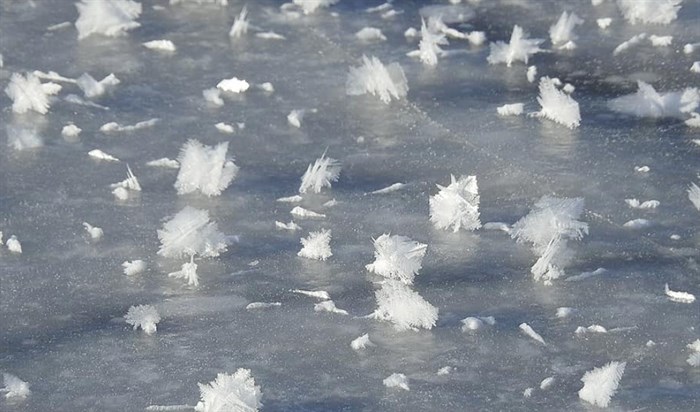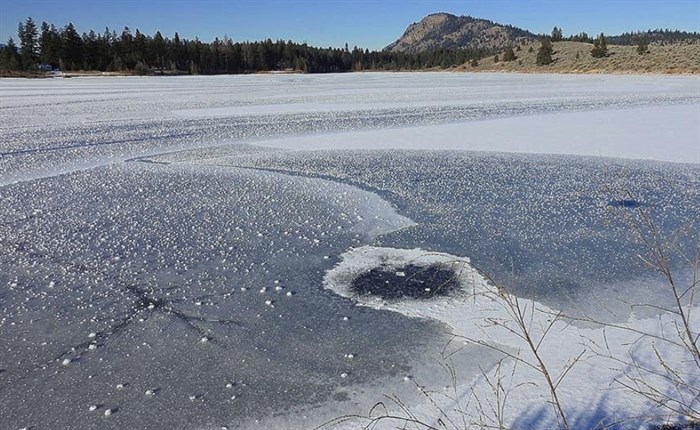
These frost formations were spotted on Inks Lake.
Image Credit: FACEBOOK / Loekie Van Der Wal
November 26, 2020 - 12:30 PM
With cool days and cooler nights, we are in the prime time for this winter phenomenon.
Facebook user Loekie Van Der Wal snapped some pictures of what they believed to be ‘frost flowers’ on Inks lake Nov. 30, 2019. Environment Canada's Armel Castellan helped us to better understand this particular type of frost, which is actually known as ‘hoar frost,’ and it only forms during specific conditions on a clear night.
Castellan says hoar frost is caused due to moisture in the air freezing and attaching to a surface radiating heat, which is what formed the frost on Inks Lake.

This close-up shot shows the details of the hoar frost.
Image Credit: FACEBOOK / Loekie Van Der Wal?
Castellan says the word ‘hoar’ comes from an Old English adjective which means ‘showing signs of old age.’ Often, hoar frost accumulates on trees and bushes, mimicking the look of white hair. The hoar frost appeared spaced out at Inks Lake, dotting the lake with tiny ice structures.
“You have a body of cold, either snow or ice and then you have usually a clear night and you’re radiating any heat that’s left away," Castellan says. "We’re talking about relative heat. You could be at, say, -5 to start the night and then at the end of the night in the early morning hours you’re dealing with -10 or -12. In that cooling off, as the heat radiates away from the surface and because there’s no clouds that act as an insulating blanket, you lose heat and then it’s the process… and it's either going to deposit as ice if it’s cold enough and as dew if it's above zero.”
As the temperatures drop, surfaces such as ice and snow radiate whatever heat they have away. The escaping heat holds moisture, which then freezes if the night air is cold enough. The tiny ice structures often blanket an area, however, Castellan isn’t entirely sure why the hoar frost pictured on Inks Lake developed in more of a spaced-out manner.

Normally, hoar frost blankets an area or surface. On Inks Lake, it appeared to be more spaced out.
Image Credit: FACEBOOK / Loekie Van Der Wal?
Although some people love to appreciate the hoar frost, Castellan says it can be extremely dangerous. When hoar frost forms on snowy slopes, it prevents the next snowfall from properly bonding to the layers below, which can result in an avalanche. When hoar frost develops, avalanche safety specialists take note, and monitor the area. Click here for more information on how frost and precipitation can affect avalanche conditions.
— This story was originally published on Dec. 6, 2019.
To contact a reporter for this story, email Jenna Wheeler or call (250) 819-6089 or email the editor. You can also submit photos, videos or news tips to the newsroom and be entered to win a monthly prize draw.
We welcome your comments and opinions on our stories but play nice. We won't censor or delete comments unless they contain off-topic statements or links, unnecessary vulgarity, false facts, spam or obviously fake profiles. If you have any concerns about what you see in comments, email the editor in the link above.
News from © iNFOnews, 2020